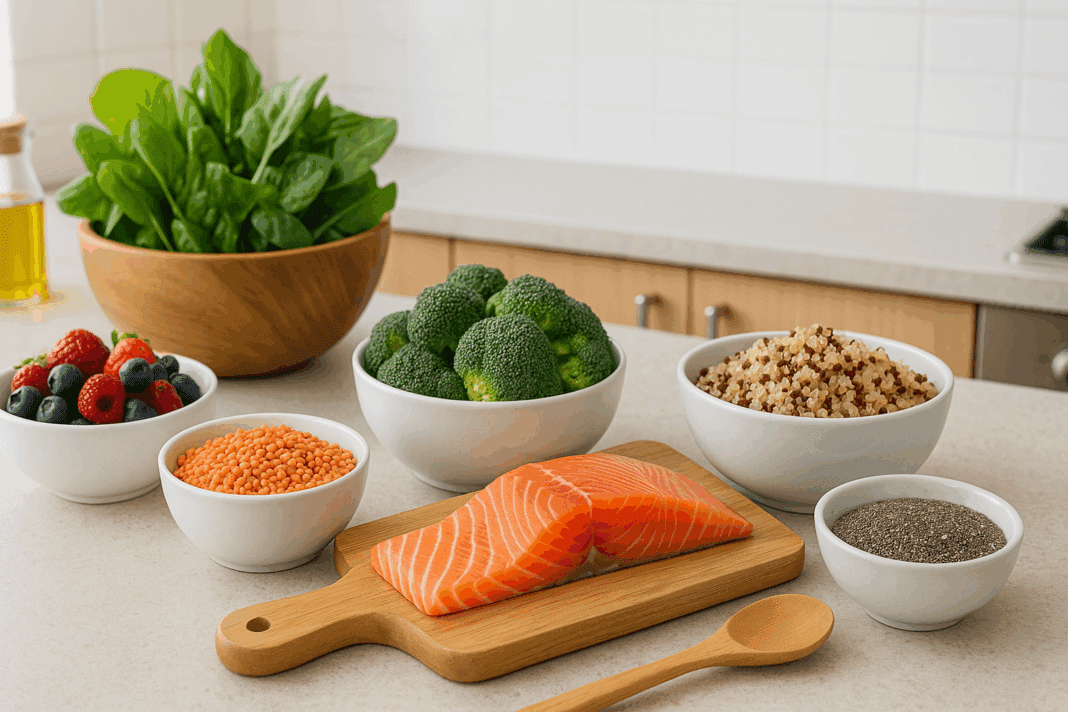Fueling Wellness Through Better Food Choices
In a world where nutrition advice seems to change as fast as the headlines, one dietary principle remains remarkably consistent: the importance of a nutrient-dense eating pattern for lasting energy, weight management, and disease prevention. Among the many strategies being embraced by health-conscious individuals, one of the most effective and scientifically validated is the high protein high fiber diet. Combining the satiating power of protein with the digestive and metabolic benefits of fiber, this approach offers a sustainable path to better health without the need for extreme restrictions or complicated routines.
Unlike restrictive fads that cut out entire food groups, a high protein high fiber diet is based on inclusion—adding nourishing, whole foods that naturally help regulate hunger, stabilize blood sugar, and improve gut health. These two powerhouse nutrients work in tandem to support everything from muscle maintenance to digestive balance and hormonal regulation. Together, they create meals that are satisfying, energizing, and protective against the chronic conditions that have become hallmarks of modern life.
This article explores how the thoughtful integration of high protein high fiber foods can dramatically enhance your health. By diving into the science behind these nutrients, their synergistic effects, and practical ways to implement them, we’ll uncover how a fiber protein diet can become a long-term, enjoyable lifestyle strategy rather than a short-term experiment. Whether you’re plant-based or omnivorous, the benefits are accessible, practical, and backed by decades of evidence.
You may also like: How a Whole Foods Diet Supports Sustainable Weight Loss: Expert Tips for Eating Whole Foods to Lose Weight Safely
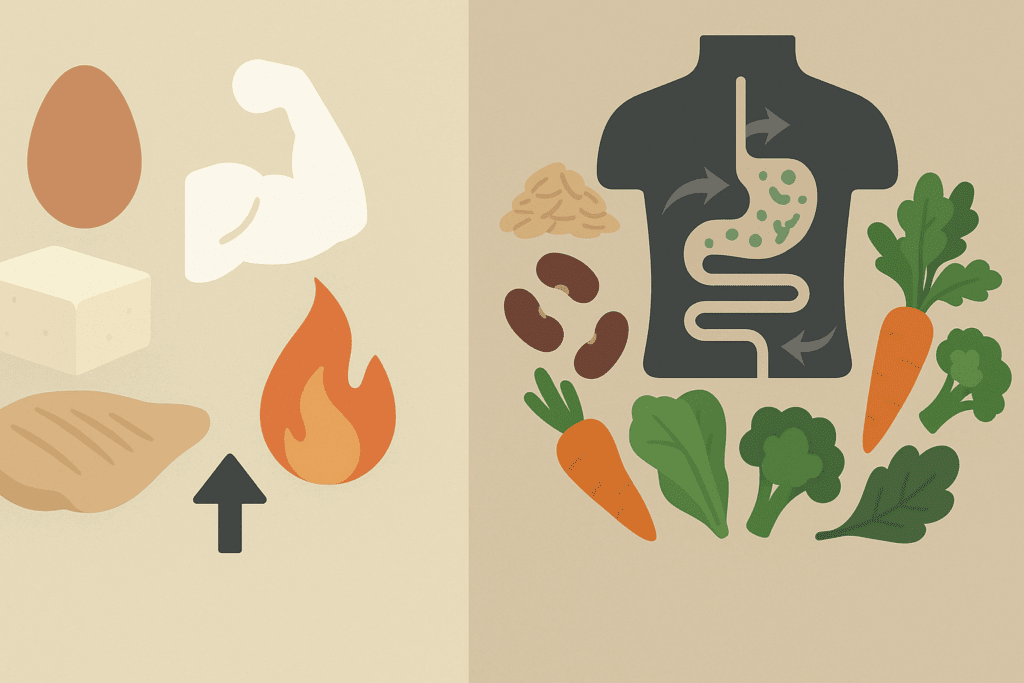
Understanding the Science Behind Protein and Fiber
Protein and fiber are often discussed separately in nutrition conversations, but their effects are even more powerful when combined. Protein is essential for cellular repair, immune function, and maintaining lean muscle mass. It also has a high thermic effect, meaning the body expends more energy digesting protein than other macronutrients—a metabolic advantage for those aiming to manage weight or improve body composition.
Fiber, on the other hand, offers no calories, yet its physiological effects are profound. Soluble fiber slows digestion, helping to control blood glucose and cholesterol, while insoluble fiber adds bulk to stool and supports healthy bowel movements. When paired together in meals, protein and fiber help promote prolonged satiety by slowing the rate of gastric emptying. This means you feel fuller for longer after eating, which in turn helps regulate appetite and reduce overall caloric intake without conscious restriction.
This synergy has meaningful implications for metabolic health. A high fiber and protein diet can support stable insulin levels, reduce inflammation, and decrease markers of metabolic syndrome. It also minimizes the blood sugar highs and lows that can lead to energy crashes, mood fluctuations, and unhealthy food cravings. These combined benefits explain why a high protein high fiber diet is consistently recommended by healthcare professionals for weight loss, chronic disease prevention, and optimal energy.

High Protein High Fiber Foods That Support Everyday Health
The success of any diet depends not only on its nutritional merit but also on its practicality and enjoyment. Fortunately, there is no shortage of satisfying high protein high fiber foods that can be easily incorporated into daily meals. Legumes such as lentils, black beans, and chickpeas are among the best examples, providing both protein and fiber in one convenient package. These foods are staples in many global cuisines and are both budget-friendly and versatile.
For plant-based eaters, foods like tofu, tempeh, chia seeds, and quinoa offer protein and fiber, along with beneficial fats and micronutrients. Those following a more omnivorous approach can benefit from lean proteins like eggs, chicken, or fish paired with high-fiber vegetables like broccoli, kale, carrots, or artichokes. When meals include a balance of these components, they not only satisfy hunger but also nourish the body at a cellular level.
Nuts and seeds—particularly almonds, sunflower seeds, and flaxseeds—are additional options that bring protein, fiber, and healthy fats into the mix. Whole grains like oats, barley, farro, and buckwheat are also excellent sources, and they can easily form the base of a satisfying fiber protein diet. Including a variety of these foods in meals and snacks helps ensure nutritional diversity and creates an eating pattern that is enjoyable, sustainable, and energizing.
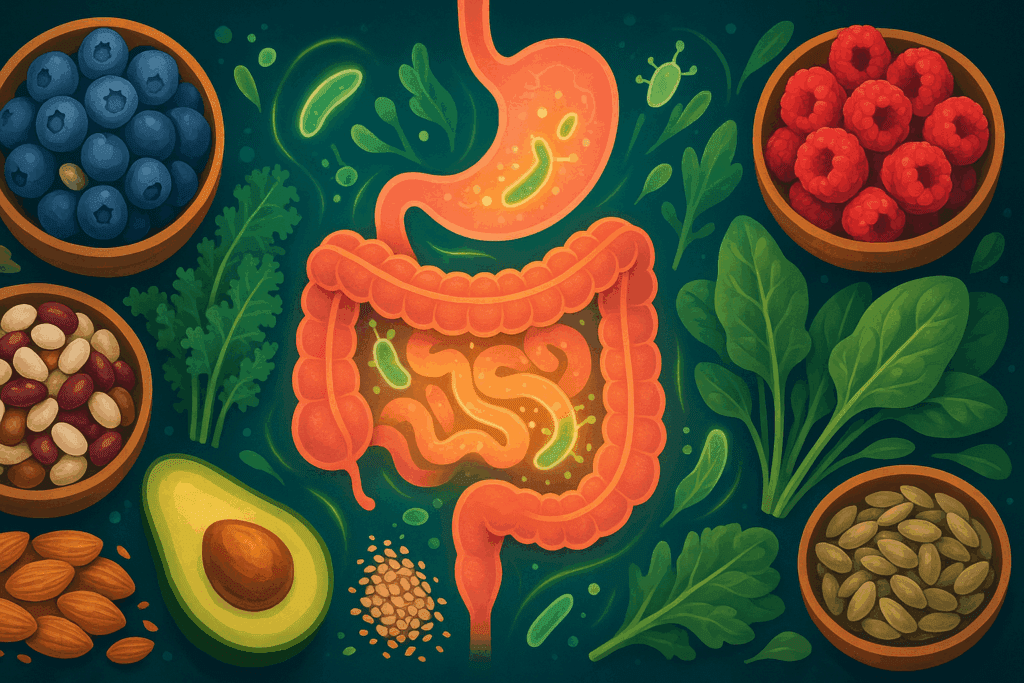
Plant Based Diet Fiber: A Cornerstone of Gut and Metabolic Health
One of the defining features of plant-based diets is their naturally high fiber content. A plant based diet fiber profile typically includes both soluble and insoluble types, providing benefits that extend far beyond digestion. Plant fibers act as prebiotics, which nourish the beneficial bacteria in the gut microbiome. A healthy microbiome, in turn, influences everything from inflammation and immunity to mood and cognitive performance.
Plant-based diets also tend to include a variety of high-antioxidant foods, which work synergistically with fiber to reduce oxidative stress and protect against chronic diseases like heart disease and type 2 diabetes. Many high fiber plant foods—like beans, berries, and greens—also support detoxification pathways in the liver and promote regular elimination, which is vital for hormone balance and cellular repair.
Critics of plant-based eating often question whether it provides enough protein, but this concern is usually unfounded when meals are well planned. Complementary plant proteins, such as rice and beans or peanut butter on whole grain toast, can meet daily protein needs effectively. When fiber is abundant and paired with adequate protein intake, the result is a high protein high fiber diet that supports not only satiety but also longevity.

How Protein and Fiber Drive Energy and Satiety
Energy isn’t just about calories; it’s about how the body processes and utilizes nutrients. Meals that include high protein high fiber foods help moderate blood sugar levels, preventing the rapid spikes and crashes that sap energy and trigger cravings. This stable blood glucose response is especially important for people managing insulin resistance, prediabetes, or type 2 diabetes.
Fiber slows carbohydrate absorption, while protein stimulates the release of hormones like peptide YY and GLP-1—both of which signal satiety to the brain. This dual action reduces the likelihood of overeating and encourages intuitive eating patterns, where hunger and fullness cues are easier to interpret and respond to. For many, this makes weight loss or maintenance more achievable without restrictive dieting.
The effect on energy is equally important. A fiber protein diet fuels the body in a sustained way, reducing the need for caffeine or sugary snacks to stay alert. People often report feeling more focused and productive throughout the day when they build meals around these nutrients. And since protein supports muscle tissue and repair, this way of eating is especially beneficial for active individuals or those engaging in strength training.
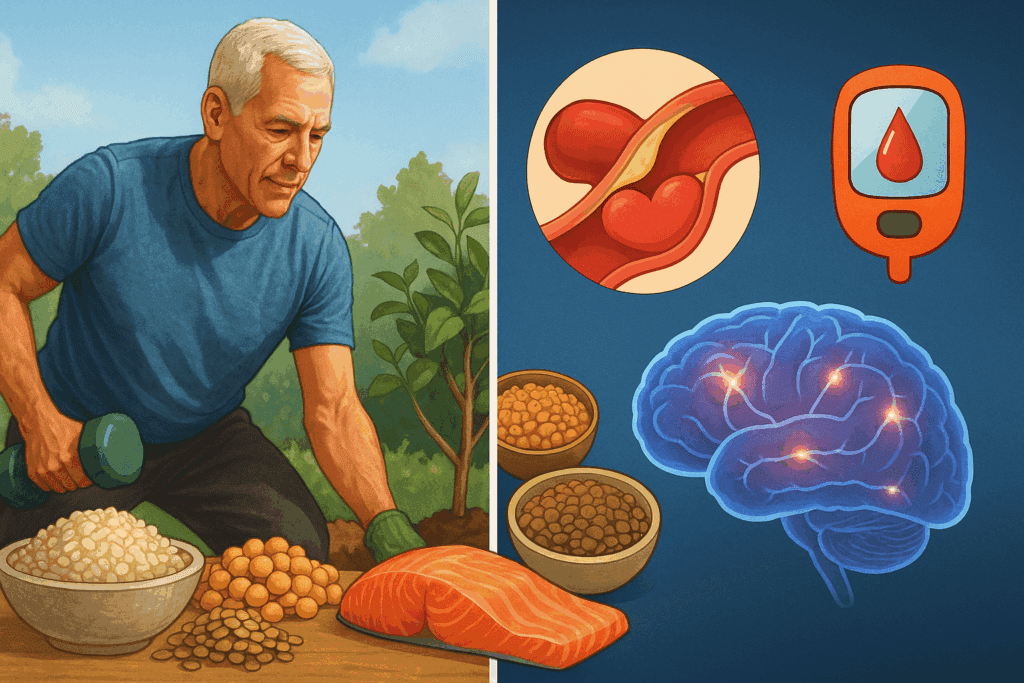
Long-Term Benefits of a High Fiber and Protein Diet
Over time, consistently eating a high protein high fiber diet can lead to significant improvements in overall health. Studies show that such diets are associated with lower risk of cardiovascular disease, improved cholesterol ratios, and reduced blood pressure. Fiber is particularly effective at binding to excess cholesterol in the digestive tract, while protein helps maintain lean body mass, which supports metabolism and mobility.
In terms of disease prevention, fiber intake has been linked to a decreased risk of colorectal cancer, and protein-rich diets support immune function, wound healing, and hormone production. These long-term benefits are especially important as the body ages and nutritional needs shift. For example, after age 50, both fiber and protein needs increase due to changes in muscle mass and digestive efficiency.
Beyond physical health, the psychological benefits of eating well should not be overlooked. A diet rich in high protein high fiber foods has been shown to support mood stability, reduce symptoms of depression and anxiety, and improve sleep quality. These effects are thought to be mediated by improved blood sugar control, reduced inflammation, and healthier gut-brain signaling pathways. When people feel nourished and satisfied, they are more likely to maintain their healthy habits for the long haul.

Building a Practical Fiber Protein Diet You’ll Enjoy
Creating a realistic, enjoyable high protein high fiber diet starts with small, sustainable changes. For breakfast, oatmeal with flax seeds, almond butter, and berries provides a rich mix of fiber, protein, and healthy fats. Lunch might include a quinoa salad with chickpeas, roasted vegetables, and tahini dressing. For dinner, try baked salmon with lentils and sautéed greens, or a tempeh stir-fry with brown rice and mixed veggies.
Planning ahead is key. Batch cooking legumes, roasting vegetables in advance, or pre-portioning high-protein snacks like trail mix or edamame can simplify the process. Variety also matters—not just for nutrition but for enjoyment. Explore different cuisines that naturally emphasize high protein high fiber foods, such as Indian, Mediterranean, Ethiopian, and Mexican dishes.
It’s also helpful to focus on food quality rather than rigid rules. Instead of obsessing over calorie counts, prioritize meals that leave you feeling energized, satisfied, and nourished. As your palate adapts and your digestion improves, you’ll naturally start to crave these nutrient-dense foods more often. A fiber protein diet doesn’t have to be complicated—it just has to be consistent, flexible, and rooted in whole, minimally processed ingredients.
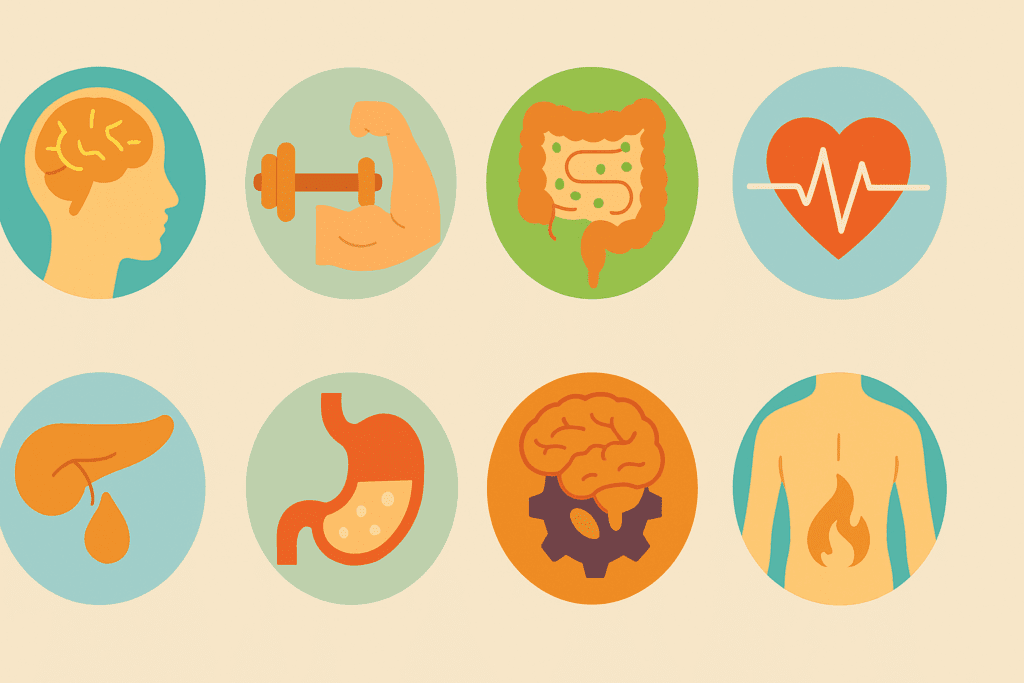
Frequently Asked Questions (FAQ): High Protein High Fiber Diet and Smart Nutrition
1. Can a high protein high fiber diet support athletic performance and muscle recovery?
Yes, a high protein high fiber diet can play a pivotal role in enhancing athletic performance and recovery, especially when strategically timed. Protein helps repair muscle fibers after strength training, while fiber slows digestion to stabilize energy levels during endurance activities. Athletes often benefit from high protein high fiber foods such as lentils with quinoa or tofu stir-fries paired with brown rice and vegetables, as these offer both amino acids for muscle repair and fiber to support digestion and blood sugar balance. Moreover, plant based diet fiber sources often include magnesium and potassium, electrolytes essential for muscle contraction and recovery. Integrating these whole foods into a fiber protein diet allows athletes to reduce inflammation, maintain lean body mass, and avoid energy crashes between training sessions.
2. How does a high fiber and protein diet affect hormones related to hunger and appetite?
The hormonal impact of a high fiber and protein diet is substantial and often overlooked. Both fiber and protein stimulate the release of GLP-1 and peptide YY, which are hormones that promote satiety and reduce appetite. Meanwhile, they suppress ghrelin, the hormone responsible for hunger. This creates a physiological environment that makes it easier to resist overeating and snacking. High protein high fiber foods also reduce insulin spikes, contributing to more stable blood sugar levels, which in turn curbs cravings. These hormonal effects make a fiber protein diet not only beneficial for metabolism but also a practical tool for improving mindful eating habits in everyday life.
3. Are there any cognitive or mental health benefits associated with a high protein high fiber diet?
Emerging research suggests that a high protein high fiber diet may support cognitive function and emotional well-being. High protein intake ensures a steady supply of amino acids like tryptophan and tyrosine, which are precursors to serotonin and dopamine—neurotransmitters that regulate mood, motivation, and focus. On the fiber side, plant based diet fiber fuels gut bacteria that produce short-chain fatty acids, which have been linked to reduced inflammation and improved brain health. This gut-brain connection has become a hot topic in neuroscience, with evidence pointing to improved memory and reduced anxiety when gut health is optimized. By including high protein high fiber foods in your daily meals, you’re not just feeding your body—you’re nurturing your mind as well.
4. Can high protein high fiber foods help with managing menopausal symptoms?
Yes, high protein high fiber foods may provide natural relief from some menopausal symptoms. As estrogen levels decline, women often experience weight gain, mood fluctuations, and blood sugar instability. A high protein high fiber diet helps regulate these changes by improving insulin sensitivity and stabilizing hunger cues. Fiber-rich foods also support estrogen detoxification through the gut, potentially easing symptoms like bloating or hormonal imbalances. Furthermore, plant based diet fiber from flaxseeds and soy-based products contains phytoestrogens, which may mimic estrogen’s effect in the body and help modulate hot flashes and bone density loss. Overall, a fiber protein diet can be a helpful lifestyle intervention during this life stage.
5. What role does a fiber protein diet play in longevity and healthy aging?
A fiber protein diet is increasingly recognized for its role in promoting healthy aging and extending lifespan. As people age, muscle mass naturally declines—a condition known as sarcopenia. Adequate protein intake is essential to slow this process, particularly when combined with resistance training. At the same time, plant based diet fiber helps maintain a healthy microbiome, which supports nutrient absorption, immune defense, and inflammation control. High protein high fiber foods also reduce oxidative stress and help manage cholesterol and blood pressure, both of which are critical for cardiovascular longevity. Together, these effects make a high fiber and protein diet one of the most effective tools for aging with vitality and independence.
6. How can someone on a tight budget maintain a high protein high fiber diet?
Eating a high protein high fiber diet on a budget is entirely achievable with smart planning. Staple foods like lentils, black beans, chickpeas, oats, and brown rice are affordable, shelf-stable, and rich in both nutrients. Buying in bulk and cooking meals at home can dramatically lower costs while increasing control over ingredient quality. Many high protein high fiber foods can be batch-cooked and frozen for convenience, such as vegetable-lentil soup or homemade bean burritos. Incorporating frozen vegetables is another great way to boost plant based diet fiber without overspending. Ultimately, a fiber protein diet doesn’t require expensive supplements or exotic ingredients—just thoughtful preparation and consistency.
7. Is it possible to over consume fiber or protein on a high protein high fiber diet?
While most people fall short of daily fiber and protein targets, excessive intake can cause side effects if not managed carefully. Consuming too much fiber—especially without sufficient water—can lead to bloating, gas, or constipation. It’s best to increase fiber slowly and hydrate well to allow the digestive system to adjust. Similarly, an extremely high protein intake may burden the kidneys in individuals with pre-existing kidney disease, though this is rarely a concern for healthy adults. A balanced high fiber and protein diet that includes both animal and plant sources generally avoids these extremes. Moderation and diversity remain key principles when building a sustainable fiber protein diet.
8. How does the source of protein affect the success of a high protein high fiber diet?
The source of protein matters significantly in terms of both nutrient quality and health outcomes. Whole plant-based protein sources such as tempeh, edamame, hemp seeds, and legumes come bundled with plant based diet fiber and beneficial phytochemicals. These foods not only support muscle repair but also contribute to gut health, antioxidant defense, and anti-inflammatory effects. On the other hand, highly processed animal proteins or red meats, especially when consumed in excess, may negate some of the benefits of a high protein high fiber diet. Opting for lean, minimally processed proteins from both plant and animal sources ensures that a fiber protein diet remains heart-healthy and environmentally sustainable.
9. What are some emerging trends in the development of high protein high fiber foods?
The food industry is increasingly innovating around high protein high fiber foods, creating options that are both convenient and nutritionally dense. New products featuring chickpea pasta, lupin flour, pea protein crisps, and fermented fiber-rich snack bars are expanding access to on-the-go meals that align with a high protein high fiber diet. There is also a growing interest in regenerative agriculture and functional food ingredients, which support biodiversity while enhancing nutrient profiles. Many brands now highlight their fiber and protein content as a selling point, especially in the plant based diet fiber space. These innovations make it easier than ever to follow a fiber protein diet without sacrificing taste, convenience, or sustainability.
10. How can a high fiber and protein diet support metabolic flexibility and fat adaptation?
Metabolic flexibility—the ability to switch between burning carbohydrates and fat for energy—is a key indicator of metabolic health. A high fiber and protein diet promotes this flexibility by reducing insulin spikes and encouraging stable glucose levels, which allows the body to access stored fat more efficiently. High protein high fiber foods also tend to be lower in glycemic load, which supports steady energy during fasting or lower-carb phases. Fiber slows digestion, extending the energy release from meals and minimizing the need for frequent snacking. Over time, a fiber protein diet can train the body to become more efficient at burning fat while preserving lean muscle mass, especially when paired with intermittent fasting or regular physical activity.
Conclusion: Embracing a High Protein High Fiber Lifestyle for Lifelong Wellness
Adopting a high protein high fiber diet is not about chasing perfection—it’s about choosing nourishment that truly supports your physical, mental, and emotional well-being. With each balanced, nutrient-dense meal, you reinforce habits that enhance satiety, fuel your body with stable energy, and protect against chronic disease. This is not a short-term fix or a trendy diet—it’s a sustainable foundation for lifelong health.
The beauty of this approach is its adaptability. Whether you prefer a plant-based lifestyle or include lean animal products, a fiber protein diet can be tailored to your personal taste, schedule, and goals. The key is to focus on whole foods, eat mindfully, and listen to your body’s signals. With intention and consistency, the benefits of this way of eating compound over time—leading not only to better health outcomes but also to a deeper connection with your food and how it makes you feel.
By embracing the power of high protein high fiber foods, you empower yourself to take control of your health in a way that is evidence-based, enjoyable, and deeply nourishing. Smart nutrition is about more than avoiding illness—it’s about building resilience, enhancing vitality, and living with purpose and strength every day.
Was this article helpful? Don’t let it stop with you. Share it right now with someone who needs to see it—whether it’s a friend, a colleague, or your whole network. And if staying ahead on this topic matters to you, subscribe to this publication for the most up-to-date information. You’ll get the latest insights delivered straight to you—no searching, no missing out.
Further Reading:
Clinical Evidence and Mechanisms of High-Protein Diet-Induced Weight Loss
Dietary protein – its role in satiety, energetics, weight loss and health
Disclaimer
The information contained in this article is provided for general informational purposes only and is not intended to serve as medical, legal, or professional advice. While NewsHealthWatch strives to present accurate, up-to-date, and reliable content, no warranty or guarantee, expressed or implied, is made regarding the completeness, accuracy, or adequacy of the information provided. Readers are strongly advised to seek the guidance of a qualified healthcare provider or other relevant professionals before acting on any information contained in this article. NewsHealthWatch, its authors, editors, and contributors expressly disclaim any liability for any damages, losses, or consequences arising directly or indirectly from the use, interpretation, or reliance on any information presented herein. The views and opinions expressed in this article are those of the author(s) and do not necessarily reflect the official policies or positions of NewsHealthWatch.

